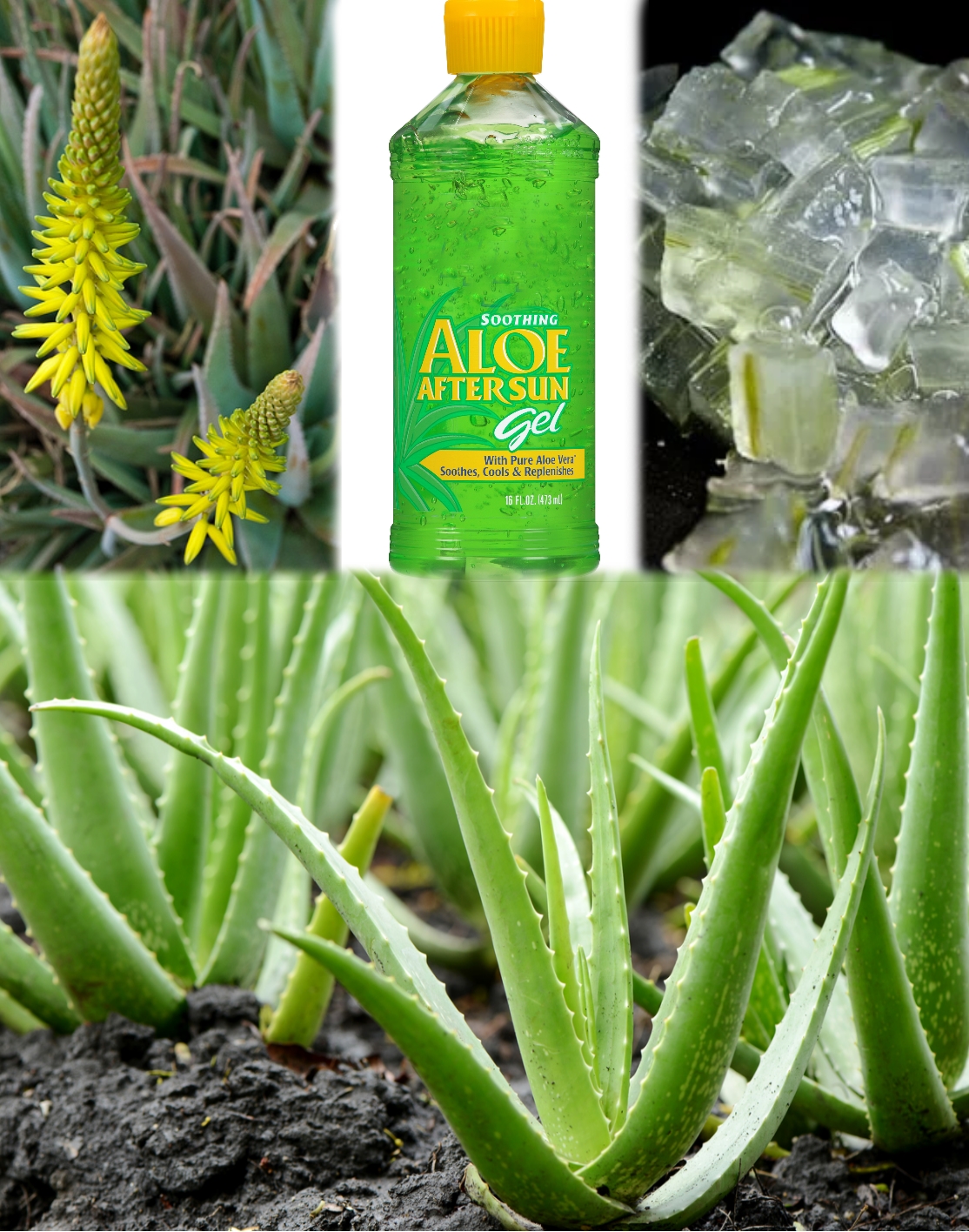 |
| Aloe! Aloe! Aloe! A picture of the Aloe vera plant, its flowers, and its products. Composite image by Tay Siang Lin (2017). |
Table of Contents
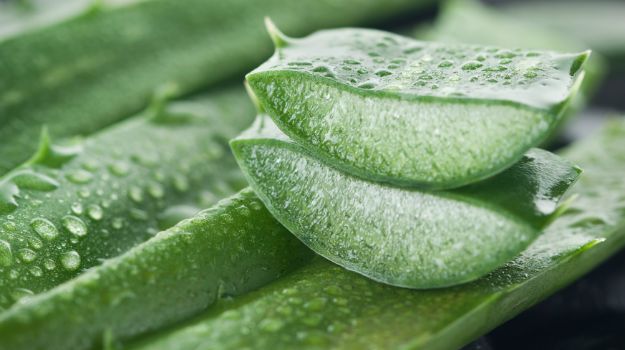 |
| Reeeeeeeeeeeeeefreshing! |
1. Description
First, let us familiarise ourselves with the appearance of the Aloe vera plant. As a relatively common plant sometimes also grown within households, most Singaporeans are likely to have seen it before. Aloe vera is a stemless or very short-stemmed succulent herb. It typically grows from 0.3 to approximately 1 m tall, sometimes reaching 1.2 m, spreading by offsets[1]. The plant reaches maturity when it has a base of 8 cm or greater in diameter [2]. It matures differently depending on cultivating conditions.
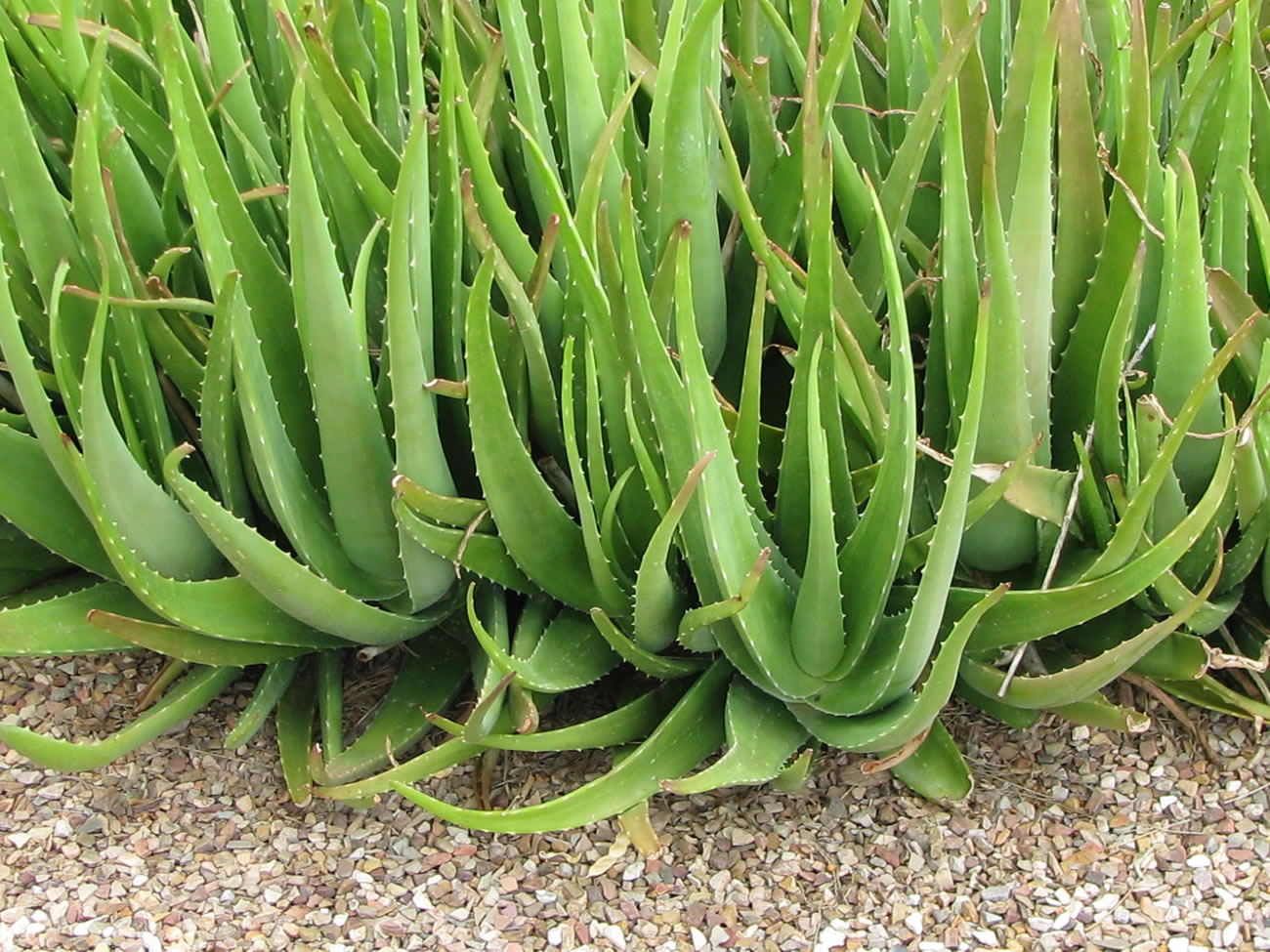 |
| Leaves arranged in a rosette |
The green to grey-green leaves are thick, fleshy and triangular, up to 0.9 m long, and are arranged in a rosette [1]. Some varieties show white flecks on their upper and lower stem surfaces [3]. The leaves are smooth while the margin of the leaf is serrated and has small white teeth. The most mature leaves are on the outer part of the rosette. Leaves are typically meaty if filled with gel that arises from the clear central mucilaginous pulp [3].
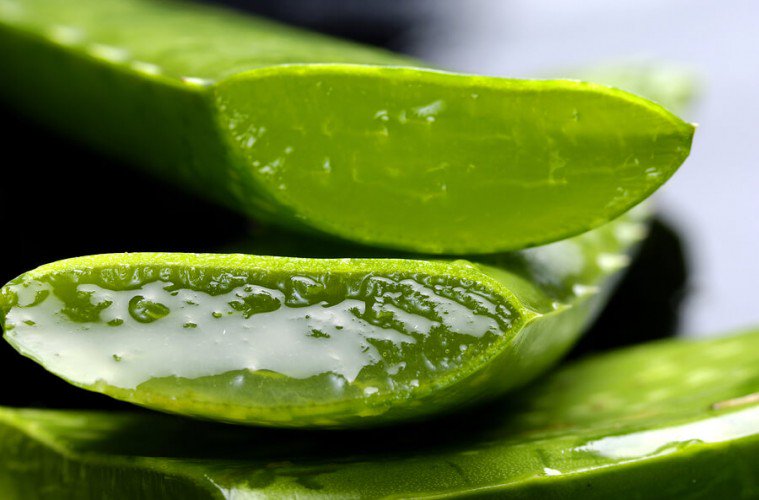 |
| Leaf meat, anybody? |
The flowers are produced in summer on a spike inflorescence up to 90 cm tall. The flowers are terminal and each flower is pendulous with a yellow tubular corolla of 2–3 cm in length [1].
 |
| Maybe mini bananas. Photo credit: Henning Leweke (Creative Commons License) |
1.1 Diagnosis
The species varies widely with regard to the white spots on the leaf [4]. There are some suggestions that Aloe massawana, which is also white-spotted, may be conspecific with the spotted form of Aloe vera and the descriptions are also similar [5, 6]. The differences lie in their distributions – Aloe massawana was described to occur near three East African ports (Massawa, Lumbo and Dar Es Salaam) while the white-spotted Aloe vera variation is found in Yemen and Saudi Arabia [7]. Considering these distributions, it has been suggested that Aloe massawana is an introduced species, possibly of Arabian origin, due to long-established trade links between East Africa and Arabia [7].
Other results by DNA comparison imply that Aloe vera is relatively closely related to Aloe perryi [8]. However, Aloe perryi is easily differentiated from Aloe vera by the teeth along the margin of the leaves, which are red in colour compared to the white in Aloe vera.
| The red serrated teeth of A. perryi. Photo credit: Morten Ross (Creative Commons License) |
2. Biology
2.1 Reproduction and Propagation
The tubular and brightly-coloured features of the Aloe vera flowers, together with abundant nectar, point to ornithophily as the main method of pollination [9]. Sunbirds (Nectariniidae) are known to frequent aloe flowers in fields and in African gardens. They are also sometimes visited by bees [9].
2.1.1 Inter-species hybridisation
Most plants of the Aloe genus are self-incompatible, yet the flowers are protandrous. In other words, the flower anthers ripen and pollen is dispersed before the stigma is receptive, hence self-pollination would not occur anyway [10]. In an area where two or more species of Aloe flower at the same time, the main pollen vectors, sunbirds, fly indiscriminately from one species to another. Hybridisation is thus frequent [10]. It was reported by Reynolds [11, 12] that many natural hybrids occur, especially in South Africa, while Newton [14] reported a number in East Africa. In gardens and greenhouse collections, where there might be only one specimen of each species, almost all seeds produced are of hybrid origin [10]. In a tropical garden, hybrid seedlings can become established quickly, and numerous garden aloes that are difficult to identify are undoubtedly of this origin. Most of such aloes produce capsules, dry dehiscent fruits that split open at maturity to release seeds. As the inflorescences sway in the wind, the seeds, which are winged, are thrown out and blown away [10].
2.2 Symbiotic relationships
Similar to many other species in its genus, Aloe vera forms arbuscular mycorrhiza, a symbiosis with fungi that allows the plant better access to mineral nutrients in soil [14].
3. Human associations
3.1 Cultivation
Want to grow your very own Aloe vera plant? It's not that difficult! Although Aloe vera can be grown from its seeds, it is most easily propagated from suckers readily produced by the mother plant. The suckers are commonly referred to as “pups” [15]. Pups can be obtained by cutting it from the main root of the mother plant. Gently uproot the mother plant and find the point of attachment. (14) Pups can be safely removed when they have several sets of leaves. The young plants should be planted in their own pot and watered deeply [16].
Some pointers:
- Aloe vera grows best under direct sun in well-drained, porous soil, but it also tolerates light shade. In Singapore, it grows well in pots that are sheltered from the rain. It is susceptible to fungal disease, so try to keep the leaves dry and keep soil from splashing on the leaves [1]. Refrain from over-watering to force the growth of new roots.
- Check the soil prior to watering. Allow the soil to dry down to a depth of 7.5 to 10 cm (3-4 in) for older, well-established plants or 3.5-5 cm (1-2 in) for younger plants [17].
- Multiple plants should be provided with individual pots or planted at least 60 cm apart outdoors [18].
Still feeling clueless? Watch the following video for more tips and information!
Save the pups! Original video from YouTube by The Neals' Homestead
3.2 Economic importance
Evidently, besides being cultivated as a 'household pet' for decorative purposes or simply to kill off boredom, Aloe vera is also propagated for agricultural, cosmetic, medicinal uses and more. Talk about many uses from just one plant!
Aloe vera is used in many consumer products including skin lotion, moisturizers, cosmetics, or ointments for minor burns and sunburns. The clear and slightly sweet-tasting tissue of the leaves are often chopped and added raw to beverages and desserts for its jelly-like consistence. The bitter, outer green layer of the leaf should be peeled away before consuming the inner flesh.
 |
| Bubble tea, anyone? |
The same portion of the Aloe vera leaves can be made into a clear gel that is often applied to minor cuts and burns to promote healing. In folk medicine, it was even ingested as a cure for constipation [19]. However, there is little scientific evidence of the effectiveness or safety of Aloe vera extracts for either cosmetic or medicinal purposes. Instead, studies finding positive evidence are frequently contradicted by other studies [20-24]. Nevertheless, the plant extract continues to be widely used in a multitude of products and cosmetic and alternative medicine industries regularly make claims regarding the soothing, moisturizing, and healing properties of Aloe vera [20, 25].
Interestingly, aloe vera leaf extract that has not undergone the industrial decolorisation process is suggested to be actually unsafe! Its oral ingestion has been listed by the California Office of Environmental Health Hazard Assessment (OEHHA) to cause cancer or reproductive toxicity [26]. Although the topical use of aloe vera is not associated with significant side effects [27], oral ingestion of aloe vera may cause abdominal cramps and diarrhea, and may also decrease the absorption of drugs [27]. Meanwhile, studies by the International Agency for Research on Cancer (IARC) have found ingested non-decolorized liquid aloe vera [28] to be carcinogenic in animals, and state it as a possible carcinogen for humans as well [29]. Be careful what you eat!
4. Distribution
The full natural range of Aloe vera is unclear as the species has been widely cultivated around the world. Its native distribution is known to be from the northern parts of Africa [30]. It grows wild in tropical climates around the world and naturalised strands of the species occur in the southern half of the Arabian Peninsula, through North Africa (Morocco, Mauritania, Egypt), as well as Sudan and neighbouring countries, along with the Canary, Cape Verde, and Madeira Islands [31].
The species was introduced to China and various parts of southern Europe in the 17th century [32]. The species is widely naturalized elsewhere, occurring in temperate and tropical regions of Australia, South America, Mexico, the Caribbean and southeastern US states [33]. Most of its distribution has been suggested to be a result of human cultivation [5], its introduced range including Hawaii, Puerto Rico and the US Virgin Islands [34].
 |
| Map from Global Biodiversity Information Facility (GBIF) showing the recorded occurrences of Aloe vera globally from 1889-2017 [30]. Map is based on occurrence records within the database and may not represent the entire distribution. |
5. Systematics and Taxonomy
5.1 Classification
- Domain: Eukaryota
- Kingdom: Plantae
- Phylum: Tracheophyta
- Class: Liliopsida
- Order: Asparagales
- Family: Asphodelaceae (previously known as Xanthorrhoeaceae) [35]
- Genus: Aloe
- Species: Aloe vera (L.) Burm. f.
5.2 Synonymy
Vernacular names: Barbados Aloe, Medicinal Aloe, Burn Plant, Aloe, Chinese Aloe, Indian Aloe, True Aloe, Burn Aloe, First Aid Plant [1, 36]| Synonyms |
Author |
| Aloe barbadensis |
Mill. |
| Aloe barbadensis var. chinensis |
Haw. |
| Aloe chinensis |
(Haw.) Baker |
| Aloe elongata |
Murray |
| Aloe flava |
Pers. |
| Aloe indica |
Royle |
| Aloe lanzae |
Tod. |
| Aloe perfoliata var. vera |
L. |
| Aloe rubescens |
DC. |
| Aloe vera var. chinensis |
(Haw.) A. Berger |
| Aloe vera var. lanzae |
Baker |
| Aloe vera var. littoralis |
J.Koenig ex Baker |
| Aloe vulgaris |
Lam. |
| Aloe maculata |
Forssk. (illegitimate) |
| Aloe variegata |
Forssk. (illegitimate) |
| Aloe vera |
Mill. (illegitimate) |
5.3 Original genus description
 |
| Original genus description of Aloe [37]. |
5.4 Etymology
This species was originally described as Aloe perfoliata var. vera in 1753 by Carl Linnaeus [38]. In 1768, it was then described as Aloe vera by Nicolaas Laurens Burman in Flora Indica, vol 83. Just about ten days later, it was again described by Philip Miller in the Gardener’s Dictionary as Aloe barbadensis, another commonly known synonym of the species [39].
The genus name arises from the Arabic word ‘alloeh’, meaning bitter and shining. The bitter leaf exudate, which produces the cathartic effects which the plant is widely used for, is derived from the peripheral bundle sheath cells of the leaves [19]. ‘Vera’, meanwhile, means true or genuine [34].
5.5 Type Information
The type specimen NHMUK BOT BM000958260, identified by P. Rupele and collected from India, is currently stored in the Natural History Museum, Cromwell Rd, Kensington, London SW7 5BD, UK, under the Natural History Museum (London) Collection Specimens dataset [40]. It is not specified if it is the holotype and is likely to be a paratype.
 |
| Type Specimen. Photo from GBIF (Creative Commons License) |
6. Phylogeny
6.1 Phylogenetic position in the Asparagales
The order Asparagales can be divided into a basal paraphyletic group, the "lower Asparagales". This includes the Asphodelaceae as defined here [41] and a well-supported monophyletic group of "core Asparagales", comprising Amaryllidaceae sensu lato and Asparagaceae sensu lato [42]. Three separate families were at one time recognized (e.g. in the first APG system of 1998): Asphodelaceae, Hemerocallidaceae and Xanthorrhoeaceae. Molecular phylogenetic studies have shown that the three are closely related [43, 44], although Rudall [45] considered that the combination into a single clade was not supported by morphological analysis. The most recent APG classification, the APG IV system of 2016, places the three former families into a single family, the Asphodelaceae sensu lato. The former families are treated as three subfamilies: Asphodeloideae, Hemerocallidoideae and Xanthorrhoeoideae [46].
The following phylogenetic tree for Asphodelaceae sensu lato is based on a molecular phylogenetic analysis of the DNA sequences of the chloroplast genes rbcL, matK, and ndhF [47]. All branches have at least 70% bootstrap support. Of the 36 genera recognized by the authors, 29 were sampled.
| Phylogenetic tree for Asphodelaceae sensu lato. Credit: Wikimedia Commons |
Aloes are now placed in the family Asphodelaceae. They had been considered part of the lily family (Liliaceae) for years under the Cronquist system of 1981 [48, 49]. This was because of the difficulty Cronquist faced in classifying the less obviously delineated lilioid monocots, and placed taxa from both modern orders Asparagales and Liliales into a single family [45].
Although still related to the lily, aloes and other plants now in the Asphodelaceae family have been found to have significant morphological and ecological differences from the lilies. Both the Liliaceae and Asphodelaceae, along with about 20 other families, are part of the larger order of plants known as Asparagales, which distinguishing characteristic includes their pigment rich black seeds [11].
6.2 Phylogenetic position in the Aloe genus
All Aloe taxa (∼400 species) share a conserved bimodal karyotype with a basic genome of four large and three small submetacentric/acrocentric chromosomes. In a study by Adams et al. [50], the physical organization of 18S–5.8S–26S and 5S ribosomal DNA (rDNA) in 13 Aloe species was investigated using fluorescent in situ hybridization (FISH). The organization was compared with a phylogenetic tree of 28 species (including the 13 used for FISH) constructed by sequence analysis of the internal transcribed spacer (ITS) of 18S–5.8S–26S rDNA. The phylogeny showed little divergence within Aloe, although distinct, well-supported clades were found. FISH analysis of 5S rDNA distribution showed a similar interstitial location on a large chromosome in all species examined. In contrast, the distribution of 18S–5.8S–26S rDNA was variable, with differences in number, location, and size of loci found between species. Nevertheless, within well-supported clades, all species had the same organizational patterns. Thus, despite the striking stability of karyotype structure and location of 5S rDNA, the distribution of 18S–5.8S–26S rDNA is not so constrained and has clearly changed during Aloe speciation.
| A representative phylogenetic tree randomly selected from the results of a successive weighting analysis based on ITS sequence data showing the central clade. Quoted from: Adams et al., 2000 |
The tree shows there is little divergence within Aloe as a whole, although several consistent clades were detected. The clade containing Aloe tenuior and Aloe ciliaris was sister to the rest. Both these species were used for FISH analysis. The tree also showed a central clade (from A. vera to A. inermis) with high bootstrap support of 96.
Quoting the conclusions of the paper, with the exceptions of Aloe ngobitensis and Aloe nyeriensis, the locations of 18S–5.8S–26S rDNA appear to be consistent with the ITS tree; species within the same clade of the ITS phylogeny had the same number and distribution of loci. This number of shared rDNA locations and clade memberships is unlikely to be due to chance. The patterns seem too congruent to be an artifact, and there are two possible explanations for this:
- The ITS sequence data reflect the history of rDNA chromosome distributions in Aloe arising by amplifications and reductions of different rDNA units at individual loci rather than a phylogeny of species relationships.
- The ITS sequence data do reflect a phylogeny of evolutionary relationships, and related species have similar distributions and sequence composition of 18S–5.8S–26S rDNA.
These seem to give some evidence of DNA phylogeny despite Reynolds [11, 12] classifying Aloe using morphological and floral features [50].
7. Useful links
- Aloe vera in Barcode of Life Data Systems (BOLD).
- Aloe vera in Encyclopedia of Lfei
- Aloe vera in GBIF
- Aloe vera in Catalogue of Life
- Aloe vera in Open Tree of Life
- Aloe vera in Biodiversity Heritage Library
- Aloe vera in GenBank Database
- Aloe vera in Flora Fauna Web
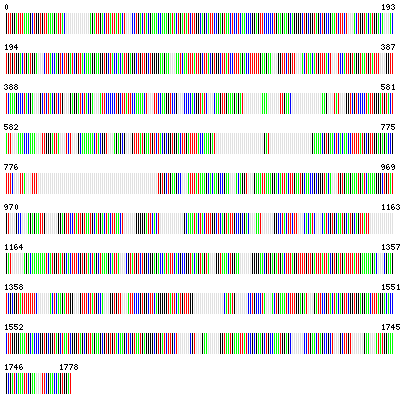 |
| Representative barcode sequence, the centroid of all available sequences for Aloe vera, from the Barcode of Life Data Systems (BOLD). |
8. References
Page done by: Tay Siang Lin (a0131343@u.nus.edu)
Literature cited:
- National Parks Board. (2013). Aloe vera (L.) Burm.f. Retrieved from https://florafaunaweb.nparks.gov.sg/Special-Pages/plant-detail.aspx?id=1643
- Yates, A., & LTD, C. (1973). Yates Garden Guide.
- McLeod, J. (2002). Australia Botanic Pocket Gardening Encyclopedia for Australian Gardeners.
- Sharma, G. P., Rani, A., Zala, D. A., Sain, M., Singh, A., & Rathore, S. (2013). Aloe barbadensis Miller a valuable ingredient for traditional uses and toxicological properties-A Review. Int. J. Rec. Biotechnol, 1, 48-54.
- Lyons, G. (2008). The Definitive Aloe vera, vera. Huntington Botanic Gardens.
- Akinyele, B. O., & Odiyi, A. C. (2007). Comparative study of the vegetative morphology and the existing taxonomic status of Aloe vera L. Journal of plant Sciences, 2(5), 558-563.
- Wood, J. R. I. (1983). The Aloes of the Yemen Arab Republic. Kew bulletin, 13-31.
- Darokar, M. P., Rai, R., Gupta, A. K., Shasany, A. K., Rajkumar, S., Sunderasan, V., & Khanuja, S. P. S. (2003). Molecular assessment of germplasm diversity in Aloe spp. using RAPD and AFLP analysis. Journal of Medicine and Aromatic Plant Sciences, 25(2), 354-361.
- Reynolds, T. (2004). Aloes: the genus Aloe. CRC press.
- Newton, L. E. (2004). Aloes in habitat (pp. 3-36). CRC Press: Boca Raton.
- Reynolds, G. W. (1982). The Aloes of South Africa. Rotterdam: AA Balkema.
- Reynolds, G. W. (1966). Aloes of tropical Africa and Madagascar.
- Newton, D. J., & Chan, J. (1998). South Africa's trade in Southern African succulent plants. Traffic east/southern Africa.
- Gong, M., Wang, F., & Chen, Y. (2002). Study on application of arbuscular-mycorrhizas in growing seedings of Aloe vera. Zhong yao cai Journal of Chinese medicinal materials, 25(1), 1-3.
- Eshun, K., & He, Q. (2004). Aloe vera: a valuable ingredient for the food, pharmaceutical and cosmetic industries—a review. Critical reviews in food science and nutrition, 44(2), 91-96.
- Das, P., & Panda, P. C. (1995). Protected cultivation of cacti and other succulents. Advances in Horticulture, 12(2), 819-851.
- Das, N., & Chattopadhay, R. N. (2004). Commercial Cultivation of Aloe. Retrieved from http://nopr.niscair.res.in/bitstream/123456789/9406/1/NPR%203(2)%2085-87.pdf
- UC Davis Botanical Conservatory. (2009). The Genus Aloe. Retrieved from http://greenhouse.ucdavis.edu/files/botnot_01-01.00.pdf
- Shelton, R. M. (1991). Aloe Vera. International Journal of Dermatology, 30: 679–683. doi:10.1111/j.1365-4362.1991.tb02607.x
- Boudreau, M. D., & Beland, F. A. (2006). An evaluation of the biological and toxicological properties of Aloe barbadensis (miller), Aloe vera. Journal of Environmental Science and Health Part C, 24(1), 103-154.
- Ernst, E. (2000). Adverse effects of herbal drugs in dermatology. British Journal of Dermatology, 143(5), 923-929.
- Marshall, J. M. (1990). Aloe vera gel: what is the evidence. Pharm. J, 244, 360-362.
- Vogler, B. K., & Ernst, E. (1999). Aloe vera: a systematic review of its clinical effectiveness. Br J Gen Pract, 49(447), 823-828.
- Feily, A., & Namazi, M. R. (2009). Aloe vera in dermatology: a brief review. Giornale italiano di dermatologia e venereologia: organo ufficiale, Societa italiana di dermatologia e sifilografia, 144(1), 85-91.
- Kunkel. G. (1984). Plants for Human Consumption. Koeltz Scientific Books. ISBN 3-87429-216-9
- U.S. Office of Environmental Health Hazard Assessment. (2015). Proposition 65. Chemicals Listed Effective December 4, 2015 as Known to the State of California to Cause Cancer: Aloe Vera, Non-Decolorized Whole Leaf Extract and Goldenseal Root Powder. Retrieved from https://oehha.ca.gov/proposition-65/crnr/chemicals-listed-effective-december-4-2015-known-state-california-cause-cancer
- National Center for Complementary and Integrative Health. Aloe Vera : Science and Safety. Retrieved from https://nccih.nih.gov/health/aloevera#hed4
- National Center for Complementary and Integrative Health. Aloe Vera. Retrieved from https://nccih.nih.gov/health/aloevera
- International Agency for Research on Cancer. (2006). IARC Monographs on the Evaluation of Carcinogenic Risks to Humans. Lyon, France.
- GBIF Secretariat. (2017). Aloe vera (L.) Burm. f. Retrieved from https://www.gbif.org/species/2777724
- Conservatoire et Jardin botaniques de la Ville de Genève. Aloe vera, African flowering plants database.
- Sreeramu, B. S. (2004). Cultivation of medicinal and aromatic crops. Universities Press.
- Royal Botanic Gardens, Kew. (2016). Aloe vera. Retrieved from http://www.kew.org/science-conservation/plants-fungi/aloe-vera-aloe-vera
- Ombrello, T. (2008). Aloe vera. Retrieved from http://faculty.ucc.edu/biology-ombrello/POW/Aloe_vera.htm
- Bremer, B., Bremer, K., Chase, M., Fay, M., Reveal, J., Soltis, D., ... & Stevens, P. (2009). An update of the Angiosperm Phylogeny Group classification for the orders and families of flowering plants: APG III. Botanical Journal of the Linnean Society.
- GBIF Secretariat. (2017). GBIF Backbone Taxonomy: Aloe vera.
- Edwards, S. (1821). The botanical register: each number is to consist of eight coloured figures of exotic plants: accompanied by their history and mode of treatment: the designs to be made from living plants (Vol. 7). James Ridgway.
- von Linné, C. (1764). Species Plantarum, Exhibentes Plantas Rite Cognitas Ad Genera Relatas: Cum Differentiis Specificis, Nominibus Trivialibus, Synonymis Selectis, Locis Natalibus, Secundum Systema Sexuale Digestas (Vol. 2). Trattner.
- Newton, L. E. (1979). In defense of the name Aloe vera. The Cactus and Succulent Journal of Great Britain, 41: 29–30.
- Natural History Museum (2017). Natural History Museum (London) Collection Specimens. Occurrence Dataset https://doi.org/10.5519/0002965 accessed via GBIF.org on 2017-10-17. https://www.gbif.org/occurrence/1055652238
- Rudall, P. J., Furness, C. A., Chase, M. W., & Fay, M. F. (1997). Microsporogenesis and pollen sulcus type in Asparagales (Lilianae). Canadian Journal of Botany, 75(3), 408-430.
- Stevens, P. F. Asparagales. Angiosperm Phylogeny Website. Missouri Botanical Garden. Retrieved from http://www.mobot.org/MOBOT/Research/APweb/orders/asparagalesweb.htm#Asparagales
- Stevens, P. F. Asphodelaceae. Angiosperm Phylogeny Website. Missouri Botanical Garden. Retrieved from http://www.mobot.org/MOBOT/research/APweb/orders/asparagalesweb.htm#aspasphodelaceae
- Chase, M. W., De Bruijn, A. Y., Cox, A. V., Reeves, G., Rudall, P. J., Johnson, M. A., & Eguiarte, L. E. (2000). Phylogenetics of Asphodelaceae (Asparagales): an analysis of plastid rbcL and trnL-F DNA sequences. Annals of Botany, 86(5), 935-951.
- Rudall, P. J. (2002). Unique floral structures and iterative evolutionary themes in Asparagales: Insights from a morphological cladistic analysis. The Botanical Review, 68(4), 488-509.
- Chase, M. W., Reveal, J. L., & Fay, M. F. (2009). A subfamilial classification for the expanded asparagalean families Amaryllidaceae, Asparagaceae and Xanthorrhoeaceae. Botanical Journal of the Linnean Society, 161(2), 132-136.
- Devey, D. S., Leitch, I., Pires, J. C., Pillon, Y., & Chase, M. W. (2006). Systematics of Xanthorrhoeaceae sensu lato, with an emphasis on Bulbine. Aliso: A Journal of Systematic and Evolutionary Botany, 22(1), 345-351.
- Cronquist, A. (1981). An Integrated System of Classification of Flowering Plants. New York: Columbia University Press.
- Beadle, N.C.W. (1981). The Vegetation of Australia. London: Cambridge University Press.
- Adams, S. P., Leitch, I. J., Bennett, M. D., Chase, M. W. and Leitch, A. R. (2000). Ribosomal DNA evolution and phylogeny in Aloe (Asphodelaceae). American Journal of Botany, 87(11), pp.1578-1583.